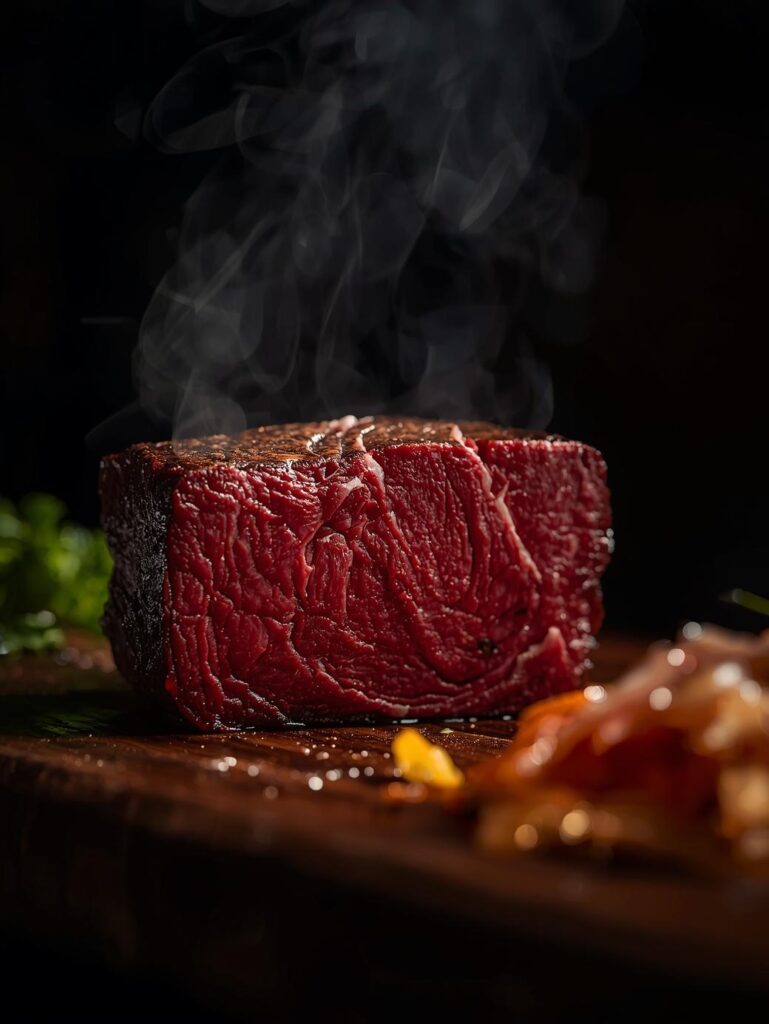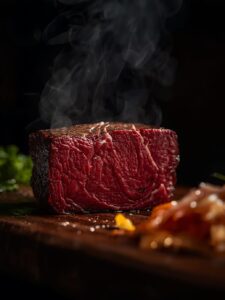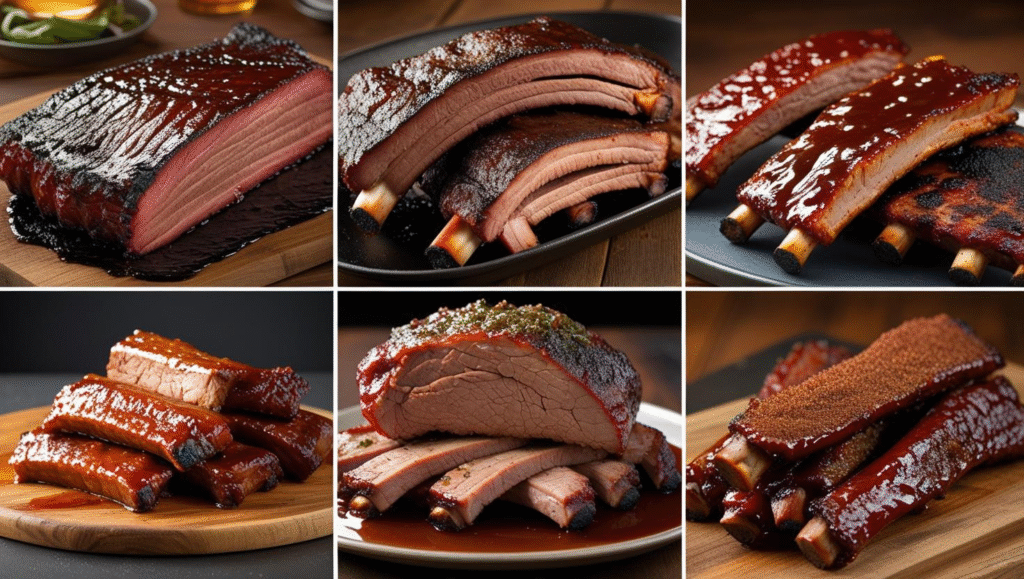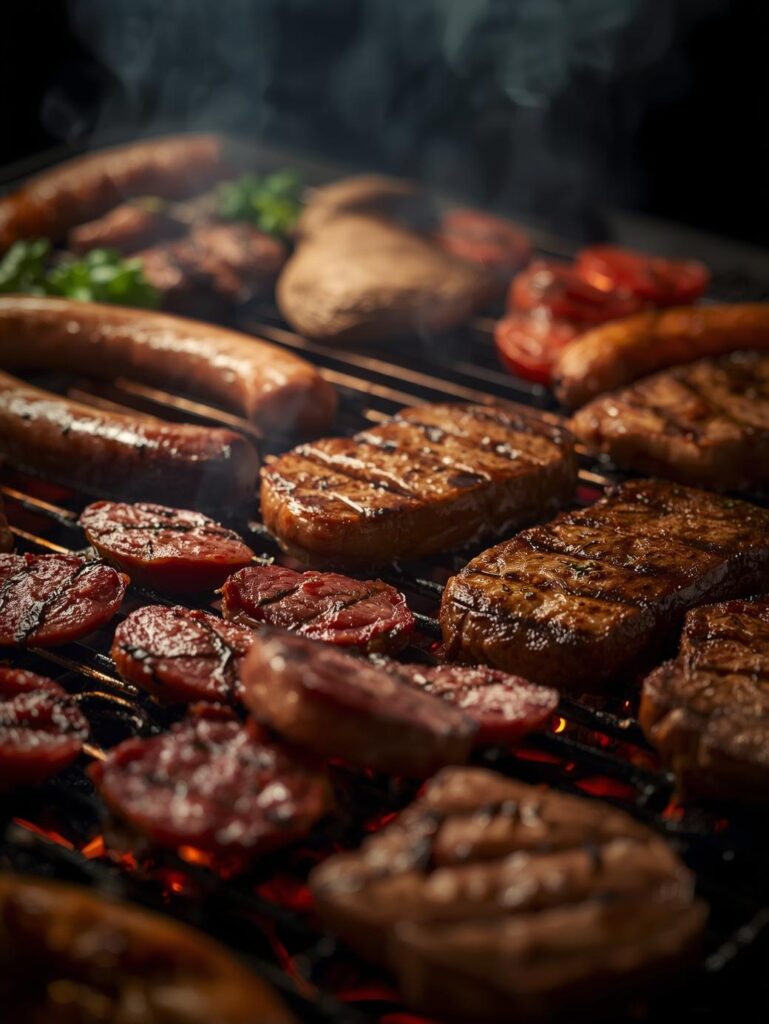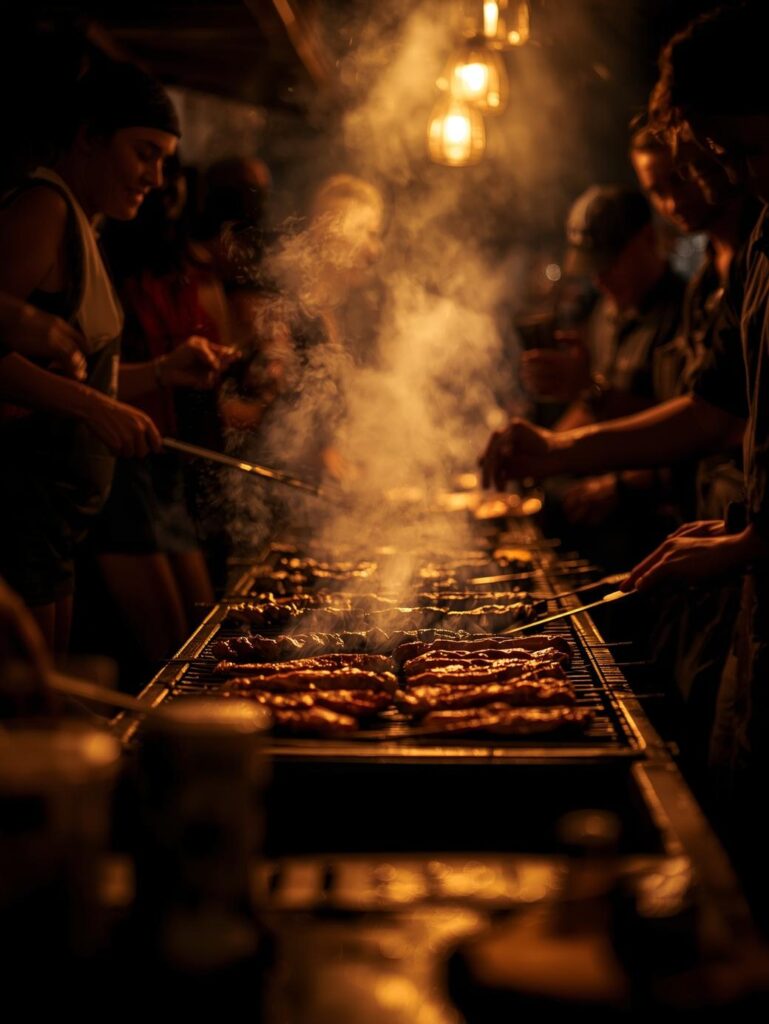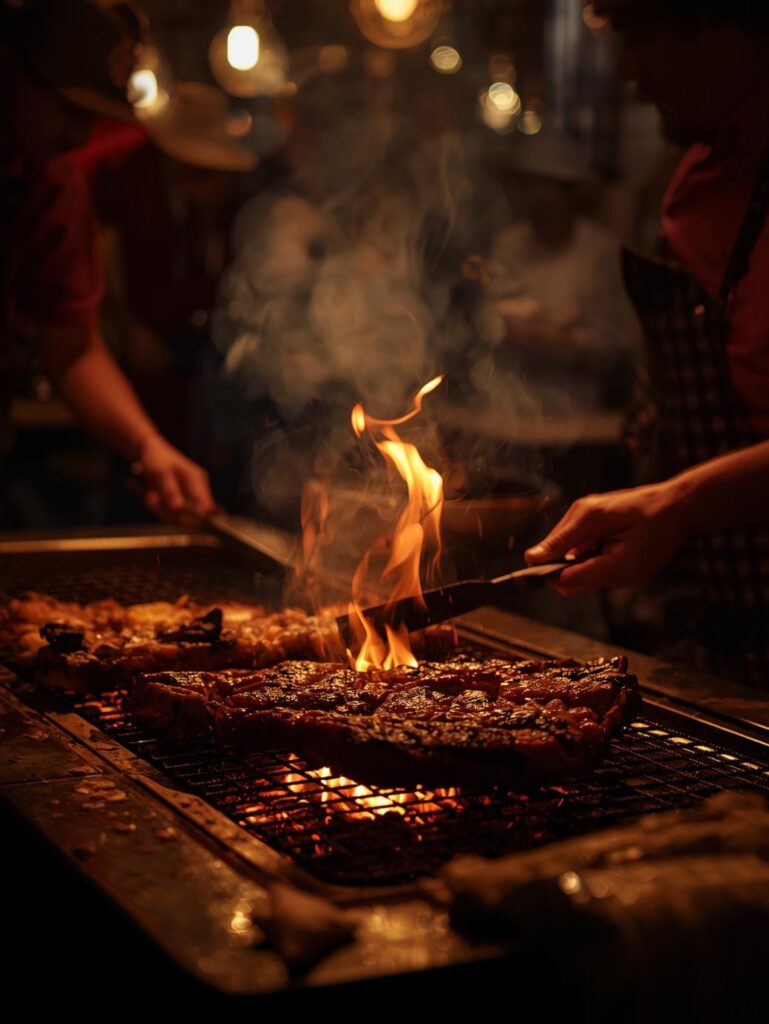Premium Beef Expert’s Note: This guide continues our global BBQ series with the pinnacle of beef perfection. Japanese Wagyu isn’t just steak—it’s a centuries-old tradition of genetic mastery, ethical husbandry, and culinary artistry that produces the most marbled, flavorful beef in the world. While Americans chase smoke rings and dry-aged crust, the Japanese have perfected the art of fat integration, creating beef that melts at body temperature and delivers umami unlike anything else on earth.
Japanese Wagyu: Understanding A5 and Cooking Perfection
“Wagyu isn’t beef you eat—it’s beef you experience. The first time A5 Wagyu hits your tongue, it doesn’t just taste; it dissolves, releasing waves of umami, butter, and subtle sweetness that redefine what steak can be. This isn’t cooking; it’s temperature management of the most precious ingredient you’ll ever touch. While other steaks need seasoning and sear to shine, Wagyu needs only your respect and a light touch to reveal its magic.”
Japanese Wagyu: Understanding A5 and Cooking Perfection
Download the Wagyu Grading Guide & Cooking Temperature Chart
Irasshaimase to the world of Japanese Wagyu—where centuries of breeding, ethical treatment, and culinary reverence converge to create the world’s most luxurious beef experience. This isn’t just another premium steak; it’s the result of genetic lines traced back generations, cattle massaged and beer-fed (yes, really), and a grading system so rigorous it makes diamond certification look simple. This guide will demystify everything from the legendary A5 rating to the precise cooking techniques that honor this incredible ingredient.
🎯 THE WAGYU PHILOSOPHY: FAT AS FLAVOR, NOT ENEMY
Understanding Wagyu means rethinking everything you know about marbling and beef quality.
⚙️ The Four Pillars of Wagyu Excellence
Genetics, Husbandry, Grading, and Respect
- Genetic Purity: True Japanese Wagyu comes from four specific cattle breeds—Japanese Black (95% of Wagyu), Japanese Brown, Japanese Polled, and Japanese Shorthorn. These breeds carry a genetic predisposition for intense marbling with monounsaturated fats.
- Ethical Husbandry: Wagyu cattle live stress-free lives with specific diets that may include beer or sake to stimulate appetite during hot summers. Some receive massages to reduce stress and improve meat quality.
- The Fat Revolution: Wagyu fat contains higher percentages of monounsaturated fats (like olive oil) and stearic acid that doesn’t raise cholesterol. The fat melts at room temperature, creating that signature “melt-in-your-mouth” texture.
- Culinary Respect: Wagyu demands minimal intervention. The beef itself is the star—seasonings and sauces are kept simple to let the natural flavors shine.
🎯 Wagyu vs. Other Premium Beef: The Marbling Spectrum
🇺🇸 USDA Prime
- 6-8% intramuscular fat
- Beefy, robust flavor
- Needs high heat sear
- Benefits from aging
- $30-60/lb
🇯🇵 A5 Japanese Wagyu
- 25-50% intramuscular fat
- Buttery, delicate flavor
- Low heat preferred
- Never wet-aged
- $150-300/lb
🔢 THE WAGYU GRADING SYSTEM: DECODING A5 PERFECTION
The Japanese meat grading system is the most rigorous in the world—understanding it is crucial.
📊 Yield Grade (A-C): The Quantity Measure
How Much Meat You Get From the Carcass
- Grade A: 72% or higher yield. The highest grade, indicating maximum meat and minimal waste.
- Grade B: 69-72% yield. Still excellent, just slightly less efficient.
- Grade C: Below 69% yield. Rarely seen in premium Wagyu exports.
- Why It Matters: Most premium Wagyu is Grade A—you’re paying for efficiency as well as quality.
⭐ Quality Grade (1-5): The Famous Marbling Score
The Beef Marbling Standard (BMS) Scale
- Grade 5 (BMS 8-12): Abundant marbling. The fat is evenly distributed, creating the signature snow-white web pattern.
- Grade 4 (BMS 5-7): Slightly less marbling but still exceptional. Often better for those new to Wagyu.
- Grade 3 (BMS 3-4): Good marbling, similar to high-end USDA Prime.
- Grades 1-2: Basic quality, rarely exported.
- The Magic Number: A5 represents the pinnacle—Grade A yield with Grade 5 marbling.
📊 The Complete Wagyu Grading Matrix
🎯 Understanding the Japanese Meat Grading Association (JMGA) System
| Grade | BMS Score | Marbling % | Fat Melting Point | Best For |
|---|---|---|---|---|
| A5 (Premium) | 8-12 | 35-50% | 77°F (25°C) | Thin slicing, luxury experience |
| A4 (Excellent) | 5-7 | 25-35% | 86°F (30°C) | Steaks, balanced flavor |
| A3 (Very Good) | 3-4 | 15-25% | 95°F (35°C) | Beginners, grilling |
| A2 (Good) | 2 | 10-15% | 104°F (40°C) | Everyday use, burgers |
| A1 (Standard) | 1 | <10% | 113°F+ (45°C+) | Stews, ground meat |
🏔️ REGIONAL WAGYU VARIETIES: BEYOND KOBE
Kobe is the most famous, but Japan has several legendary Wagyu regions worth knowing.
🐂 Kobe Beef (Hyogo Prefecture)
The Most Famous Name
- Requirements: Tajima cattle breed, raised in Hyogo prefecture, Yield Grade A or B, Quality Grade 4 or higher.
- Marbling: BMS 6+ required. Finely textured, snow-white fat distribution.
- Flavor Profile: Incredibly delicate, slightly sweet, with unparalleled tenderness.
- Production: Only ~3,000 cattle certified annually worldwide.
- Price Point: $200-400/lb for premium cuts.
🗻 Matsusaka Beef (Mie Prefecture)
The Luxury Alternative
- Unique Practice: Cattle fed beer and massaged with sake. Females only, never calved.
- Marbling: Often exceeds Kobe in marbling scores. BMS 8-12 common.
- Flavor Profile: Rich, buttery, with pronounced umami. Considered more luxurious than Kobe by many connoisseurs.
- Production: Only ~2,500 cattle annually. More exclusive than Kobe.
- Price Point: $250-500/lb for premium cuts.
🎌 Omi Beef (Shiga Prefecture)
The Historical Choice
- History: Dating back 400 years, served to shoguns and royalty.
- Marbling: Balanced marbling—rich but not overwhelming.
- Flavor Profile: Clean, mild flavor with elegant fat distribution. Less intense than Matsusaka.
- Unique Character: Known for its refined, sophisticated flavor profile.
- Price Point: $150-300/lb for premium cuts.
🐃 Miyazaki Beef (Miyazaki Prefecture)
The Award Winner
- Recognition: Won the “Wagyu Olympics” multiple times.
- Marbling: Exceptional marbling with bright red meat contrast.
- Flavor Profile: Robust beef flavor balanced with delicate fat. Best of both worlds.
- Value: Often better value than Kobe with similar quality.
- Price Point: $120-250/lb for premium cuts.
🔥 COOKING A5 WAGYU: THE ART OF MINIMAL INTERVENTION
Cooking Wagyu requires unlearning everything you know about steak preparation.
🎪 Method 1: Traditional Japanese Teppanyaki
The Restaurant Experience at Home
- Cutting: Slice against the grain into 1/4-inch thick pieces. Thinner than American steaks.
- Surface: Use a flat steel or cast iron griddle. No grill grates—you don’t want to lose precious fat.
- Temperature: Medium heat (300-350°F). Wagyu fat renders quickly—too hot and you’ll burn it.
- Cooking Time: 60-90 seconds per side. You’re warming and rendering, not “cooking” in the traditional sense.
- Seasoning: Sea salt only, applied after cooking. The beef needs no other enhancement.
- Serving: Immediate consumption. Letting it rest diminishes the unctuous texture.
🎪 Method 2: Western Adaptations
When You Want a “Steak” Experience
- Thickness: 1-1.5 inches maximum. Thicker cuts become overly rich.
- Reverse Sear: Cook at 200°F in oven until 110°F internal, then quick sear.
- Searing: 45 seconds per side maximum. You want color, not crust.
- Internal Temperature: 120-125°F for medium-rare. The fat will continue rendering after removal.
- Resting: 3-5 minutes only. Unlike traditional steak, you don’t want it to cool significantly.
- Alternative: Consider slicing after cooking rather than serving as a whole steak.
📋 THE WAGYU COOKING DECISION MATRIX
Choosing Your Wagyu Cooking Method
| Cut | Best Method | Thickness | Internal Temp | Serving Style |
|---|---|---|---|---|
| Ribeye/Strip | Teppanyaki slices | 1/4 inch | Warm (no temp) | Immediate, with rice |
| Filet/Tenderloin | Whole steak reverse sear | 1 inch | 115-120°F | Sliced at table |
| Wagyu Burger | Griddle or flat top | 1/2 inch patty | Medium (135°F) | Simple bun, no cheese |
| Wagyu Sukiyaki | Hot pot/swish | Paper thin | 2-3 seconds dip | With broth, veggies |
| Wagyu Tartare | Raw preparation | Finely diced | Raw | With yolk, light season |
🚨 WAGYU COOKING MISTAKES: WHAT NOT TO DO
🎯 Common Wagyu Errors and How to Avoid Them
| Mistake | Result | Why It Happens | Proper Technique |
|---|---|---|---|
| High Heat Searing | Burnt fat, bitter taste | Treating like regular steak | Medium heat, quick render |
| Overcooking | Greasy texture, lost flavor | Cooking to medium or beyond | Rare to medium-rare only |
| Heavy Seasoning | Masked delicate flavor | Using steak rubs/marinades | Salt only, after cooking |
| Long Resting | Cooled, congealed fat | Standard steak practice | 3-5 minute rest maximum |
| Grill Grates | Lost rendered fat | Traditional BBQ mindset | Flat surface only |
🏁 MASTERING THE ULTIMATE BEEF EXPERIENCE
Mastering Japanese Wagyu means understanding that you’re not just cooking meat—you’re orchestrating a sensory experience that represents centuries of culinary tradition and genetic perfection. This isn’t about transforming an ingredient through technique; it’s about revealing what’s already there through respect and precision.
Your Wagyu journey starts with accepting that less is more. Then comes the careful selection—understanding grades, regions, and cuts that match your experience level and preferences. Finally, you’ll master the gentle cooking techniques that preserve the delicate fat structure and incredible flavor that makes Wagyu worth its legendary price tag.
So approach your Wagyu with reverence, cook with restraint, and remember the three rules of Wagyu mastery: respect the fat, minimal intervention, and immediate enjoyment. Your journey to understanding the pinnacle of beef perfection starts now.
🇯🇵 START WITH TEPPANYAKI STYLE →
Master the traditional Japanese method that honors Wagyu’s delicate nature
No posts found.
Explore More Premium Beef Traditions: Continue your journey through the world’s finest meats.

